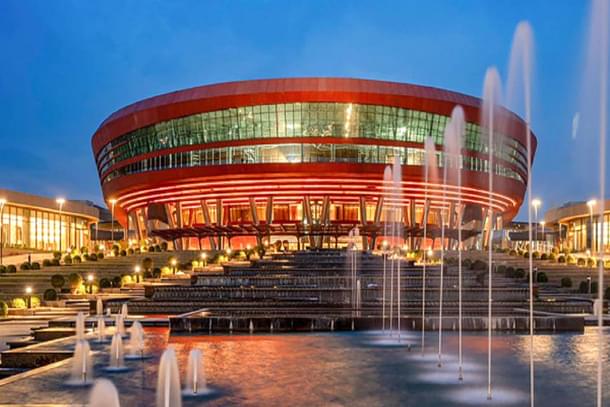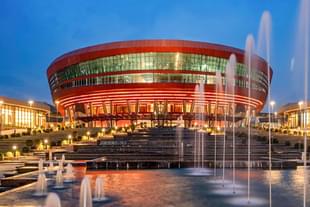News Brief
Yuge Yugeen Bharat National Museum: A Glimpse Into 5,000 Years Of India's Civilisational Odyssey
Abhay Rathore
Jul 28, 2023, 03:39 PM | Updated 03:39 PM IST
Save & read from anywhere!
Bookmark stories for easy access on any device or the Swarajya app.


Located in the heart of the country's capital, the Yuge Yugeen Bharat National Museum is set to become the largest museum in the world.
It will have a total area of 1.17 lakh sqm and will occupy the North and South blocks. It will feature 950 rooms spread across a basement and three storeys, a report by a news wire agency has said.
Prime Minister Narendra Modi celebrated International Museum Day on 18 May by launching a virtual walkthrough of the upcoming museum.
The inauguration took place during a three-day International Museum Expo at Pragati Maidan in Delhi.
In a recent ceremony, Prime Minister Modi inaugurated the International Exhibition-cum-Convention Centre (IECC) complex. This complex, developed at a cost of approximately Rs 2,700 crore, covers a campus area of about 123 acres. During the event, the complex was named Bharat Mandapam.
During his inauguration address, Prime Minister Modi also revealed the Yuge Yugeen Bharat National Museum.
This museum will consist of "eight thematic segments" and will display the diverse cultural heritage of India, covering a span of 5,000 years, according to officials.
The segments will encompass various periods, including ancient Indian knowledge, the transition from ancient to medieval times, the medieval era, the transition from medieval to modern India, the colonial rule by the Dutch, British, Portuguese, and others, the freedom struggle, and the post-independence period up to the present day.
The museum aims to provide a forward-looking perspective, as stated by a senior official.
The virtual walkthrough of the museum offers a digital preview of the galleries and gardens, giving visitors an idea of what to expect once the museum is completed.
Through exhibits, these galleries will provide information on ancient town planning systems, the Vedas, Upanishads, ancient medical knowledge, and more.
The walkthrough mentions the Mauryan to Gupta Empires, Vijayanagara Empire, Mughal Empire, and the rule of several other dynasties.
As part of the project, the ancient artefacts and rich collections of the National Museum, located on Janpath, are planned to be shifted to the buildings of the North and South Blocks. This was stated by a senior official earlier.
The South Block is home to the External Affairs Ministry, the Defence Ministry, and the Prime Minister's Office. On the other hand, the North Block houses the ministries of finance and home.
According to Union Minister of State for Culture Meenakashi Lekhi, the current National Museum building will become part of the Kartavya Path and the annexes of the Kartavya Path.
The construction of the current National Museum building was initiated by Jawaharlal Nehru, the first Prime Minister of India, on 12 May, 1955.
The Kartavya Path, formerly known as Rajpath, is a ceremonial pathway that stretches from India Gate to Raisina Hill.
Abhay Rathore is Staff Writer at Swarajya.





